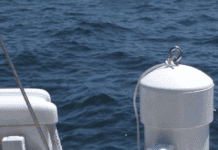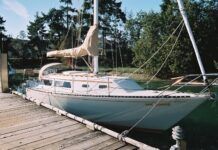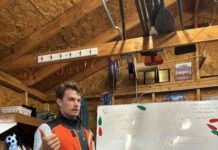As this issue goes to press in late November, Keith Kilpatrick, a crewmember aboard Amer Sports One in the Volvo Ocean Race, has just come ashore after a long ride in the Southern Ocean with an intestinal blockage. He’s 35 pounds below his fighting weight, but he’s recovering. He hadn’t been able to eat or drink anything for more than a week, and was kept alive by navigator Roger Nilson, who’s also a physician. Nilson gave Kilpatrick nine bags of nutrients by IV during the course of the week (they were dropped by air, along with other medical supplies), and monitored his progress, keeping in touch with other physicians onshore.
At this point it’s not clear what caused the obstruction-it might have been something Kilpatrick ate, or his intestine might have gotten inflamed after he was slammed against something down below in heavy weather. At any rate, without Nilson and the airlift, it sounds as if Kilpatrick probably wouldn’t have survived.
Most of us will never have to face a situation like that, but there are a lot of long-distance sailors, Practical Sailor readers included, who spend considerable time offshore, out of reach of immediate help. That’s a wonderful thing-it’s part of what makes an adventure. However, an adventure should be a calculated risk, not an ignorant joyride, and there’s nothing that will make a soul feel more ignorant than facing a medical emergency offshore without knowing beans about how to handle it.
In our mid-month issue you’ll get an evaluation of medical kits, written by Paul Gill, who’s an ER doctor and sailor, as well as author of The Onboard Medical Handbook. The kits he reviews are billed as appropriate for “coastal cruising.” In other words, they’ll help you patch things up when there’s a reasonable prospect of getting help quickly if you need it. It’s a straightforward evaluation, exactly along the lines of what we usually do in this magazine. The Kilpatrick episode, though, got me wondering how many offshore boats are prepared to handle anything more complex than a minor medical problem.
People who undertake an adventure offshore should have some first-aid training-not just the skipper (although he or she is ultimately responsible for everyone’s welfare), but everyone in the crew, because skippers, too, can fall overboard or get hit in the head by the boom, or gash themselves, or have a severe allergic reaction to something. Everyone should learn CPR. It’s not difficult, and it actually works once in a while. Everyone should have at least a rudimentary knowledge of the body’s major systems. They should know how to treat shock, how to stop bleeding, how to take vital signs, and how to immobilize someone’s spine.
If you have a severe medical problem on board, you’ll need outside help, no matter who’s on board or how adept they are at emergency care. One of the best ways to help the patient while rescuers are on the way is to know how to record and give information to the cavalry over the airwaves. In every case they’ll want to know the same basics: time and cause of the problem, location of the problem, pulse, respirations, blood pressure, level of pain, amount of blood loss, level of consciousness, skin color and temperature, pupil response, motor function. These basics need to be monitored, carefully recorded on paper, and transmitted by crew to rescuers, sometimes very frequently, for as long as it takes for someone to get there. That continuously updated written checklist becomes almost a graph of how the patient is holding up under the care of the crew. The checklist is a litany known and recited by emergency responders everywhere-police, fire, Coast Guard, medical control at the hospital. Learn a bit of what’s behind that litany, and you’ll put a lot more calculation into your risk when you head offshore.
-Doug Logan





































